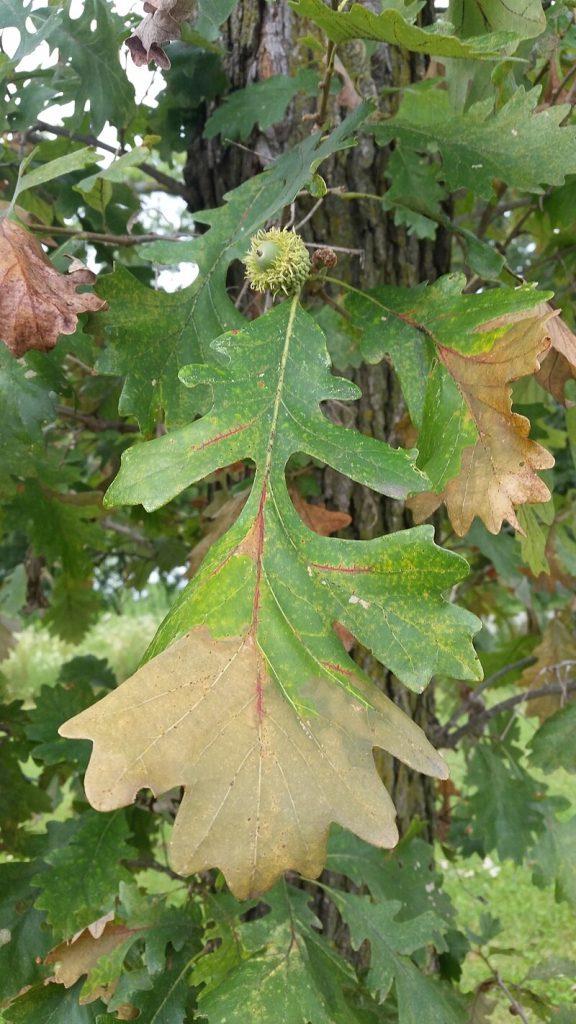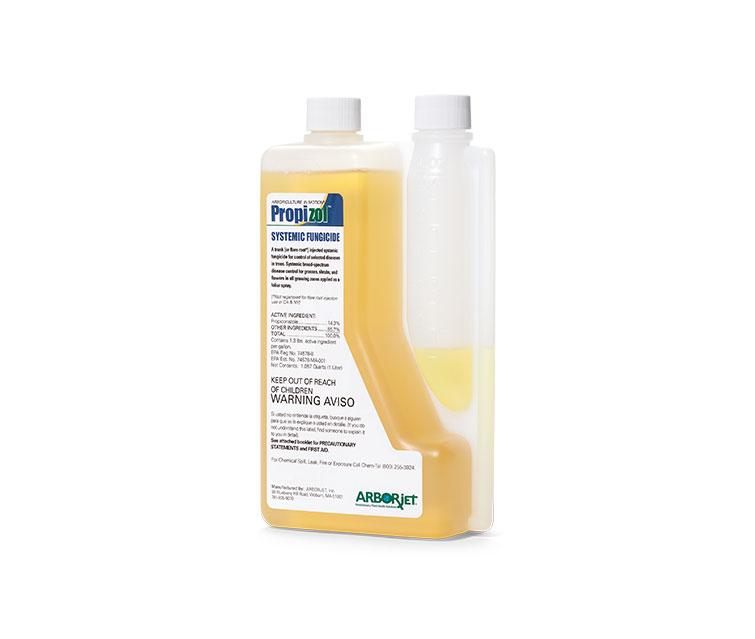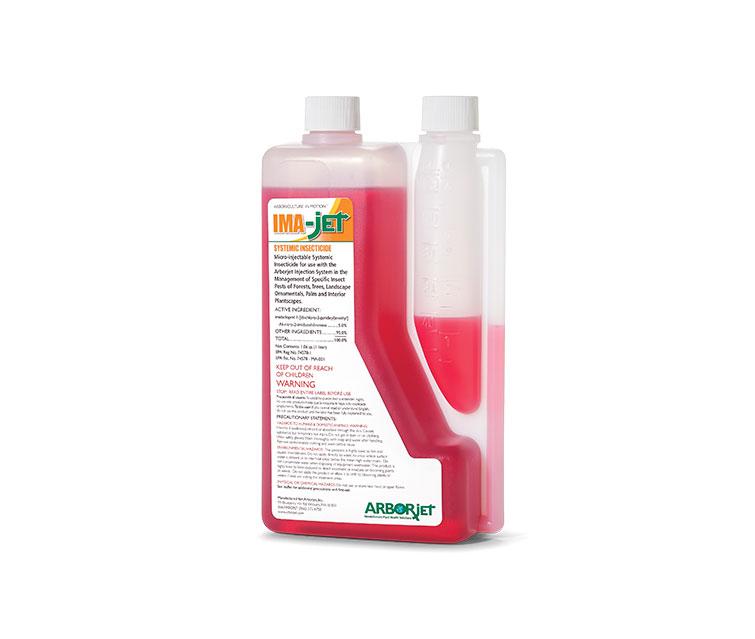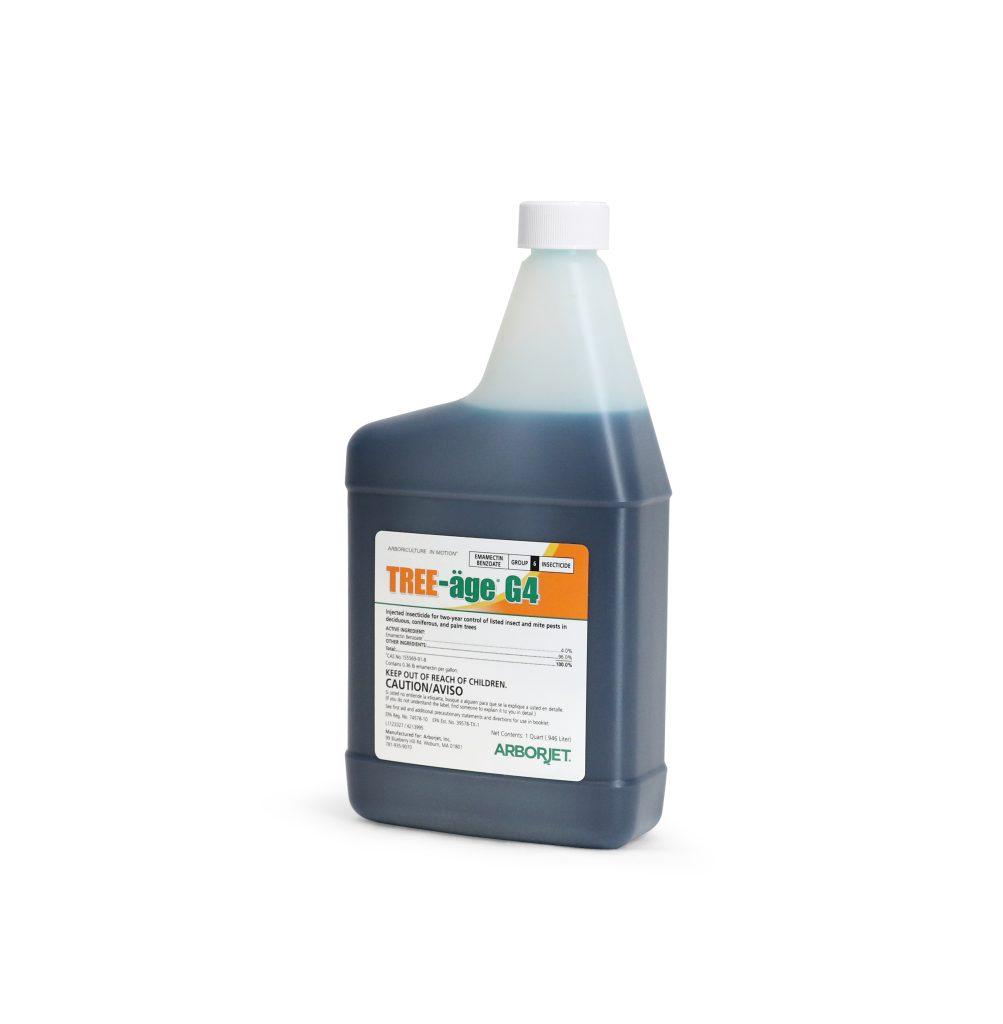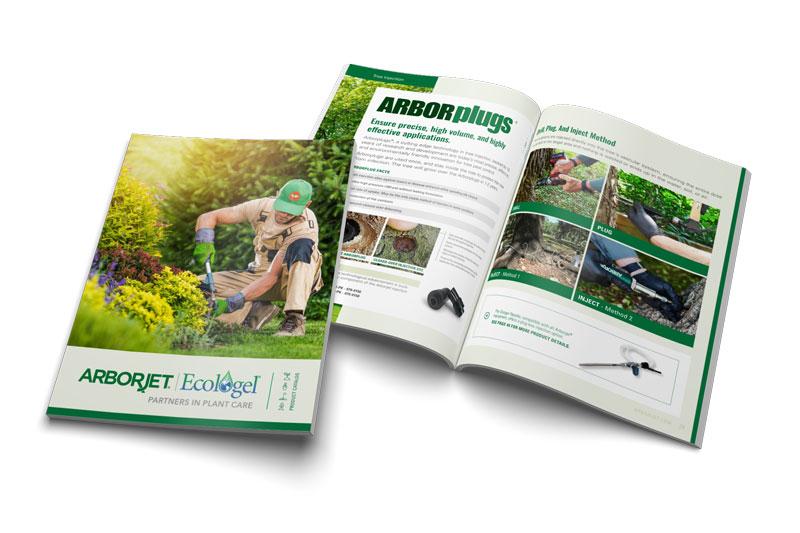Bur Oak Blight
Bur Oak Blight (BOB, Tubakia iowensis), is a serious and progressive leaf disease that leads to the decline of certain Bur Oak (Quercus macrocarpa) trees. Repeated, and progressive disease development will weaken the tree and allow for secondary problems such as Two Lined Chestnut Borer, which may result in tree death. BOB only affects bur oaks, most commonly the native species with smaller acorns. It is found in the Midwestern states, but has increased in severity in Minnesota, Iowa, Illinois, and eastern Nebraska. Recent rainy spring seasons have increased its prevalence.
Common Symptoms
Symptoms begin as brown wedge-shaped lesions on the leaves, which may continue to develop through the summer causing the leaf to turn fully brown. Small black fruiting bodies of the fungus are often visible on the veins or petioles of affected leaves. Trees may suffer from BOB one year and then re-leaf normally the next spring, only to show symptoms again by mid-summer.
Treatments
Spring trunk injections of Propizol® have proven to be effective when treatments are made between partial leaf emergence and the first week of June. Fall applications made in late September to early October will provide protection into the following spring.
Tree growth regulator treatment (Shortstop® 2SC) of the affected trees will enhance their ability to sustain the stresses caused by BOB and potentially reduce the number of affected leaves. Apply Shortstop anytime during the growing season which will benefit the tree for three years.
We recommend following up the fungicide treatment with IMA-jet® or TREE-age® G4 or R10 insecticide to protect from Two Lined Chestnut Borer, which may affect the tree once weakened by BOB. Use the same injection sites when applying the two products.
References And Photo Credits
Main Image Damage: Bur Oak Blight symptoms on upper leaf surface, Wikipedia
BOB lesions on veins if leaf; image by Carrs Tree Service
Close up of Black Pustules on leaf stem, image taken by Dr. Tom Harrington and Doug McNew, Iowa State University
Different levels of BOB infection; image by Windbreak Trees

